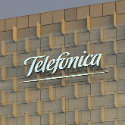A new 5G tie-up between the Internet giant and the telco raises further questions about the shifting balance of power in telecom.

The web giants continue their invasion of the telecom sector. Just a few weeks after Microsoft swallowed Affirmed Networks and Metaswitch, two network software developers, Google has marched into the network of Spain's Telefónica. The "alliance," which comes months after a similar move with Telecom Italia, is plotting new "edge" services based on the new 5G standard. But it poses all sorts of questions about the shifting balance of power between cloud and telco titans.
Each company has something the other one needs. For Google, it's Telefónica's last-mile infrastructure, potentially including its many thousands of central offices dotted about the country. Applications are traditionally hosted in large data centers that can be hundreds or even thousands of miles from end users, resulting in a lag on the network (called "latency" in the industry). This wasn't a problem in the 4G days, but it might be with new 5G applications. To solve it, central offices and other telecom infrastructure can be repurposed as mini data facilities at the network's "edge." In parts of Spain, Telefónica is already at work on this transformation.
Telefónica, for its part, needs Google's hyperscale chops and IT expertise. Operators have never been good at application development or had much cloud-computing knowhow, and that is unlikely to change with the arrival of 5G. A Google partnership gives Telefónica access to the web giant's mobile edge platform and other important cloud and software goodies. At the very least, these will include the standard set of platform products that Google Cloud offers.
Not much else is promised initially, though. The headline details are that Google Cloud will set up camp in the Madrid area, using infrastructure provided by Telefónica. At first, this means companies there will be able to use Google Cloud products with reduced latency and better network performance, says Telefónica in a statement. Those worried about data security far from home will also be able to store applications in local public cloud servers. But when it comes to new types of 5G application for companies and consumers, no examples are provided. All Telefónica will say is that "smart retail," media and gaming are its main target sectors.
It also says the use of Google's mobile edge computing platform does not rule out the use of other "middleware" and cloud providers. Those include its own cloud services based on platforms developed by VMware, a Dell-owned US software company, and MobiledgeX, another software firm backed by Germany's Deutsche Telekom. Moreover, it is working with "hyperscalers" besides Google, including Microsoft, to ensure customers can access a range of public cloud services at the edge when "single-digit latency" is required. Less certain is in which data facilities the Google platform gets deployed. Telefónica says it is still figuring that out with Google and its own networks team.
Want to know more about 5G? Check out our dedicated 5G content channel here on Light Reading.
The news may trouble those perennially worried operators are ceding ground to Internet companies. Telefónica is not prepared to say how revenues from new 5G applications will be shared. Although it will sometimes take the lead in customer relationships, Google will be able to market edge services directly, the telco told Light Reading. Alarmists will see the partnership as another sign that operators are being driven into the connectivity backwoods of the 5G business.
Some operators, clearly, have been much warier of tie-ups with Internet firms. "I won't mention names, but we've already had exclusive deals offered where they want to provide infrastructure and for us to provide only connectivity," said Channa Seneviratne, a network engineering director for Australia's Telstra, at a conference in June last year. Earlier in 2019, Howard Watson, the chief technology officer of the UK's BT, declined during an earnings call to answer one analyst question about his willingness to let Google and Amazon into BT's edge. "I think that's something we spend quite a lot of time thinking about and isn't something we're going to comment on at this stage."
Notwithstanding those concerns, the alliance with Google is one of the first outings for Telefónica Tech, the new business unit the Spanish operator set up as part of its latest big restructuring in late 2019. Uniting smaller units targeting big data, the cloud, the Internet of Things and security, this overarching group is aiming for €2 billion (US$2.3 billion) in additional annual sales by 2022. That implies a near doubling in revenues over the next three years and would require Telefónica to sustain an annual growth rate of 21%.
On the plus side, revenues were up 26% last year, said Telefónica, and a more joined-up strategy should aid their prospects. But gains in 2019 were from a smaller base, and Telefónica didn't have to contend with a pandemic back then. Telefónica's digital track record is questionable, too. In 2011, it set up a business called Telefónica Digital, with similar transformational objectives to the new Telefónica Tech. Three years later that fell victim to a round of cutbacks and restructuring. As interesting as the Google tie-up looks, the Spanish operator will have to do more to show that Telefónica Tech can thrive.
UPDATE: Since this article was first published, Telefónica has responded to a number of questions about the deal. The article has been updated accordingly.
Related posts:
— Iain Morris, International Editor, Light Reading
Read more about:
EuropeAbout the Author(s)
You May Also Like











